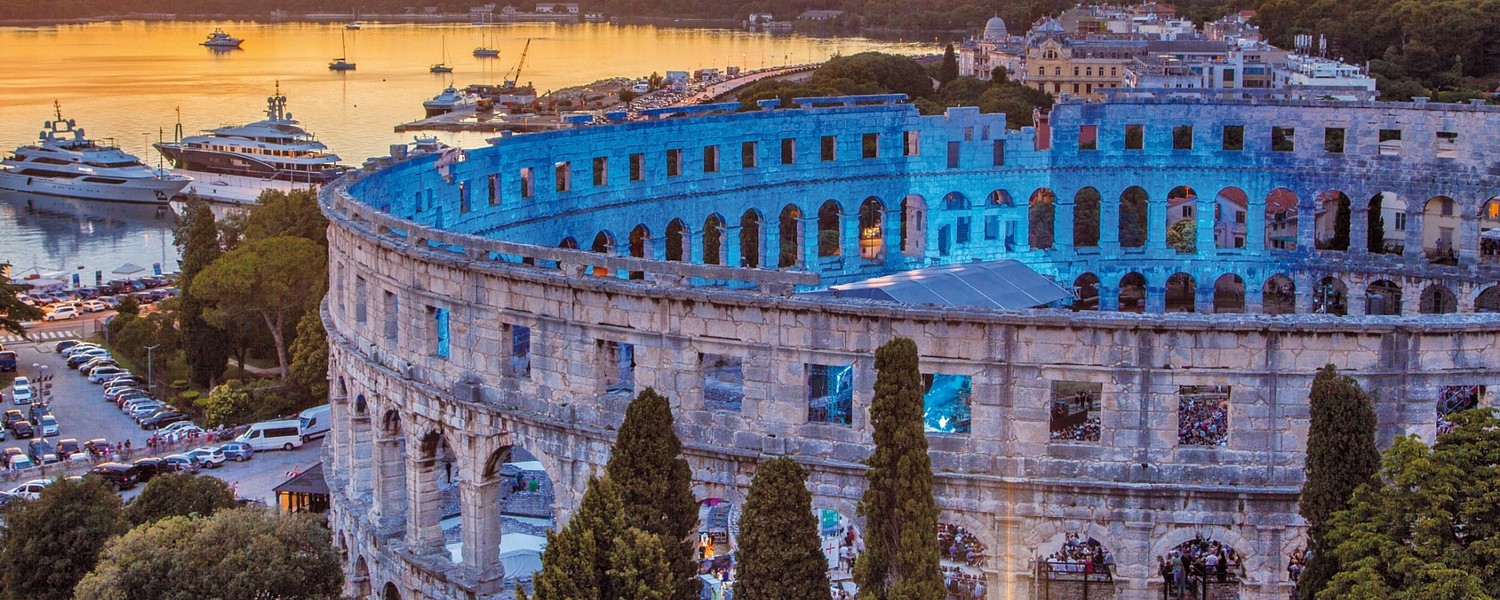
Provided by:
IstriaTB_ART-FHeuer/Istria Tourist Board

Our travel guides are free to read and explore online. If you want to get your own copy, the full travel guide for this destination is available to you offline* to bring along anywhere or print for your trip.
*this will be downloaded as a PDF.Price
€4,95
The City
The guide was updated:
The ancient town of Pula has been inhabited since 1000 BC. Roman expansion into the peninsula in the first century AD has left the city with many of its most glorious monuments, including the world-renown amphitheatre which hosts the city’s annual opera festival every summer. After the fall of Rome, Pula passed through the hands of various warring groups including the Ostrogoths and the Francs before becoming part of the Venetian republic in the 12th century, leaving the port city with an eclectic mix of cultural influences which can be seen in the architecture of the city today.
Pula has a certain literary fame as well, mentioned in Dante’s 14th century classic, "The Divine Comedy," and as the home of Irish author, James Joyce, who taught at the Berlitz School in 1905. 21st-century Pula nestles snugly at the cusp of seven hills that open out into a wide natural harbour, which has been the bustling commercial hub of the city since the mid-19th century.
The centre of the city can easily be explored on foot and many of Pula’s most exciting museums, restaurants and parks are within 10 minutes’ walk of each other. If you have time, venture beyond the city and into the surrounding area where Roman ruins lie buried in the fertile farmland and numerous tiny picturesque villages cling to the glittering coastline. It is a great area to walk in and the exquisite beauty of the nearby national parks is not to be missed.
Pula has a certain literary fame as well, mentioned in Dante’s 14th century classic, "The Divine Comedy," and as the home of Irish author, James Joyce, who taught at the Berlitz School in 1905. 21st-century Pula nestles snugly at the cusp of seven hills that open out into a wide natural harbour, which has been the bustling commercial hub of the city since the mid-19th century.
The centre of the city can easily be explored on foot and many of Pula’s most exciting museums, restaurants and parks are within 10 minutes’ walk of each other. If you have time, venture beyond the city and into the surrounding area where Roman ruins lie buried in the fertile farmland and numerous tiny picturesque villages cling to the glittering coastline. It is a great area to walk in and the exquisite beauty of the nearby national parks is not to be missed.



